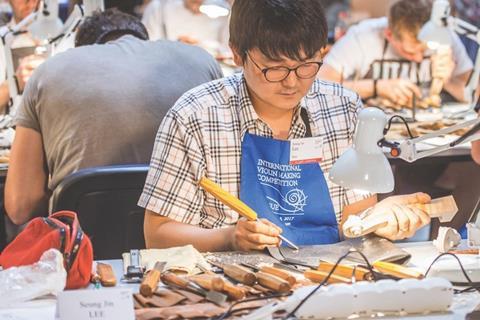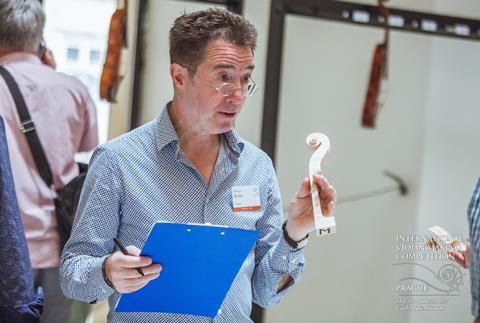Luthier Patrick Robin, one of the jury members of the International Violin Making Competition Prague, discusses how he goes about assessing an instrument

The September 2017 issue of The Strad includes a full report about the International Violin Making Competition Prague. To read, download the issue on desktop computer or via the The Strad App, or buy the print edition.
When I look for the first time at an instrument, the first and major question that I ask to myself is: Does it have the potential to be a good and interesting musical instrument?
This sounds a bit vague, but that is really what we luthiers make, or should make, and it is not easy to achieve. Sometimes musical instruments can look or feel more like furniture.
As I go into more detail, I consider the following points:
Concept and general impression

- Dimensions and proportions
- Materials: the potential acoustic and mechanical qualities of the chosen spruce and maple (it could be willow or poplar for violas and cellos)
- Shape of the archings
- Position of f-holes and their size
- Quality of the varnish: thickness and hardness
While I look at all these different aspects I also hold the instrument to feel its weight and liveliness. All these points have a direct link with the character of the voice of an instrument, and with its identity as a musical instrument.
Will it be a good instrument to handle?
Considering how the instrument will feel in a musician’s hands, I look at the architecture of the set-up, not necessarily taking measurements but having a good overview of the set-up and its impact for playability and sound production.
- Neck length and bridge stop, string length
- Size and shape of the neck, comfort in the hand and good transition to upper registers
- Projection of fingerboard over the belly, bridge height, for good clearance of bow between the C bouts
- Projection of neck over the belly edge
- Angle of strings over the bridge and height of the low saddle
- Bridge curvature, string height, choice of bridge wood, proportions and quality of the cut
- Fingerboard shape, hollow, smoothness of finish
- Top nut: good transition of strings to the peg box, string height

Stylistic appreciation and technique
We want an instrument that belongs to the great traditions of violin making. But it should be a living tradition with instruments showing character and individuality.
I look at the making technique as a way to achieve both a great musical instrument and a beautiful piece of sculpture.
Good technique doesn’t necessarily mean pristine cleanliness of the finish, but a rough finish can obscure an otherwise well thought-out and interesting instrument.
One can have a great sense of sculpture and great technique, and not be too interested by the cleanliness of the surface. On the other hand a maker can have a poor technique but be able to hide it under hours of painstaking grinding away and attention to details.
Technique means a clever hand in the service of clear ideas and spontaneity. Originality and fresh ideas are always major points.
In terms of the finish: sculpture, surface finish, ground coat and varnish are a whole.
Varnish is an important topic, of course. It should protect the instrument from daily use but not be too hard.
Sound
I am always struck first by the character of an instrument and secondly by the way it functions.
- Does it have an interesting, beautiful voice?
- Power is important but only if the voice is beautiful; one doesn’t want to listen to a screaming soprano!
- Variations of colors and dynamics
- Presence, projection into the hall
- Pianissimi: how do they project?
- Forte: can the instrument sustain pressure without saturation?
- Is the instrument equal in registers?
- Does it speak easily?
Finally, if there are some faults in the instrument, do they appear to come from the concept or just setting up problems? I will usually give a chance to an instrument which has a great character even if I feel that the adjustments could be improved.
The September 2017 issue of The Strad includes a full report about the International Violin Making Competition Prague. To read, download the issue on desktop computer or via the The Strad App, or buy the print edition.








































No comments yet